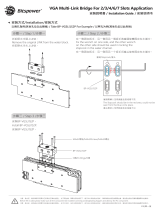
Dishwasher detergents contain irri-
tant or corrosive ingredients. They
can cause burning in the mouth and
throat if swallowed, or inhibit breathing.
Keep children away from detergents
and from the dishwasher when the
door is open. There could be deter-
gent residues in the appliance.
To avoid the danger of children
coming into contact with the dish-
washer detergent: Only put it into the
detergent dispenser just before starting
the programme, and then secure the
door with the child safety lock.
For models with “Delay Start” option
make sure the detergent dispenser is
dry before putting in detergent. Wipe
dry if necessary. Detergent will clog if
poured into a damp dispenser and may
not be thoroughly dispensed. If the
door is open at the end of a pro-
gramme, children may come into con-
tact with this residue.
Water in the dishwasher must not
be used as drinking water.
Appliances with a cutlery basket:
items of cutlery are cleaned and
dried more efficiently if placed in the
basket handles downwards. You may
however, prefer to place cutlery with
sharp points with the handles upwards.
Always disconnect the appliance
from the electrical supply for main-
tenance work (switch off at wall socket
and remove plug, screw out fuse in
countries where this is applicable).
The following notes should help to
avoid material damage
The voltage and frequency shown
on the data plate must match the
mains supply in the house.
Only use detergents formulated for
domestic dishwashers. Do not use
washing-up liquid.
Do not use commercial or indus-
trial detergents as these may dam-
age material and there is a risk of
severe chemical reaction.
Inadvertently filling the salt reser-
voir with dishwasher detergent al-
ways leads to damage to the water sof-
tener. Make sure that you have picked
up the right packet of dishwasher salt
before filling the salt reservoir.
Inadvertently filling the rinse aid
reservoir with powder or liquid
detergent always leads to serious dam-
age to the reservoir. Only use rinse aid
formulated for domestic dishwashers.
Do not sit or lean on the opened
door. This could cause the dish-
washer to tip and be damaged.
Plastic items which cannot with-
stand being washed in hot water,
e.g. disposable plastic containers, or
plastic cutlery should not be cleaned in
the dishwasher. The high temperatures
could cause the material to distort.
Warning and safety instructions
7





















